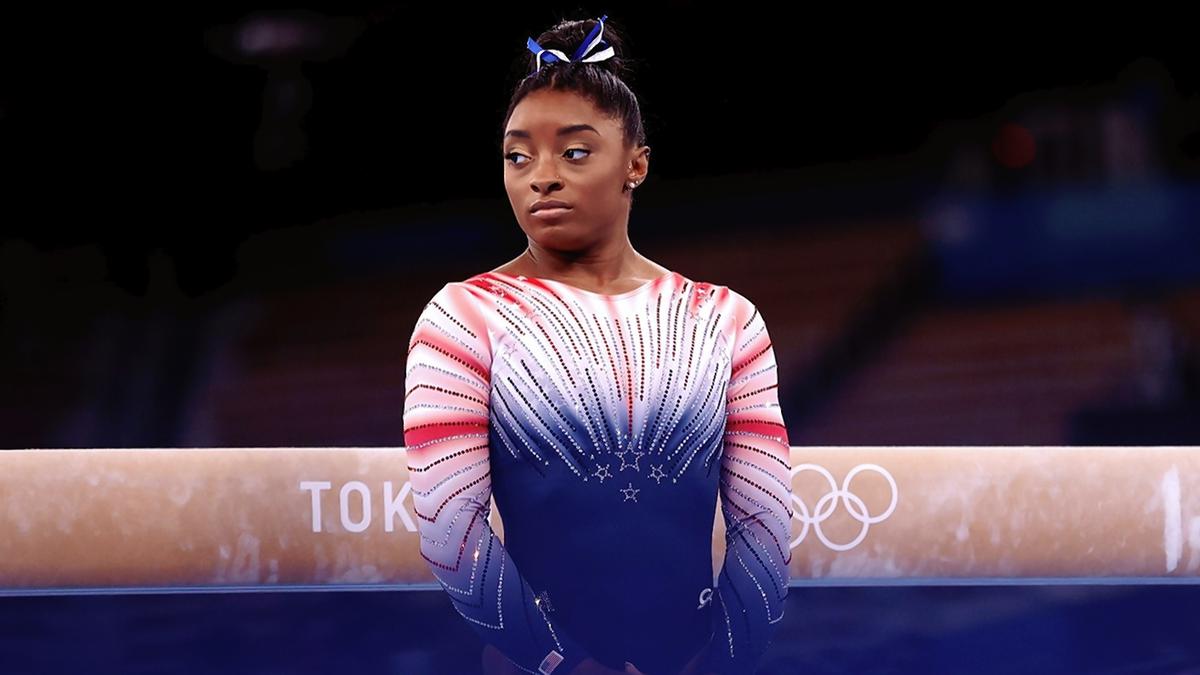Explainer | What’s the difference between artistic and rhythmic gymnastics?
Here’s all you need to know about artistic and rhythmic gymnastics at the Olympics.
What is Artistic gymnastics?
Introduced in 1894, artistic gymnastics was one of the original disciplines in the modern Olympic Games. Artistic gymnasts are challenged to perfect their skills across a range of equipment, such as the beam and performing on the floor to name a few.
Women’s artistic gymnastics:
In women’s artistic gymnastics, there are four core events-
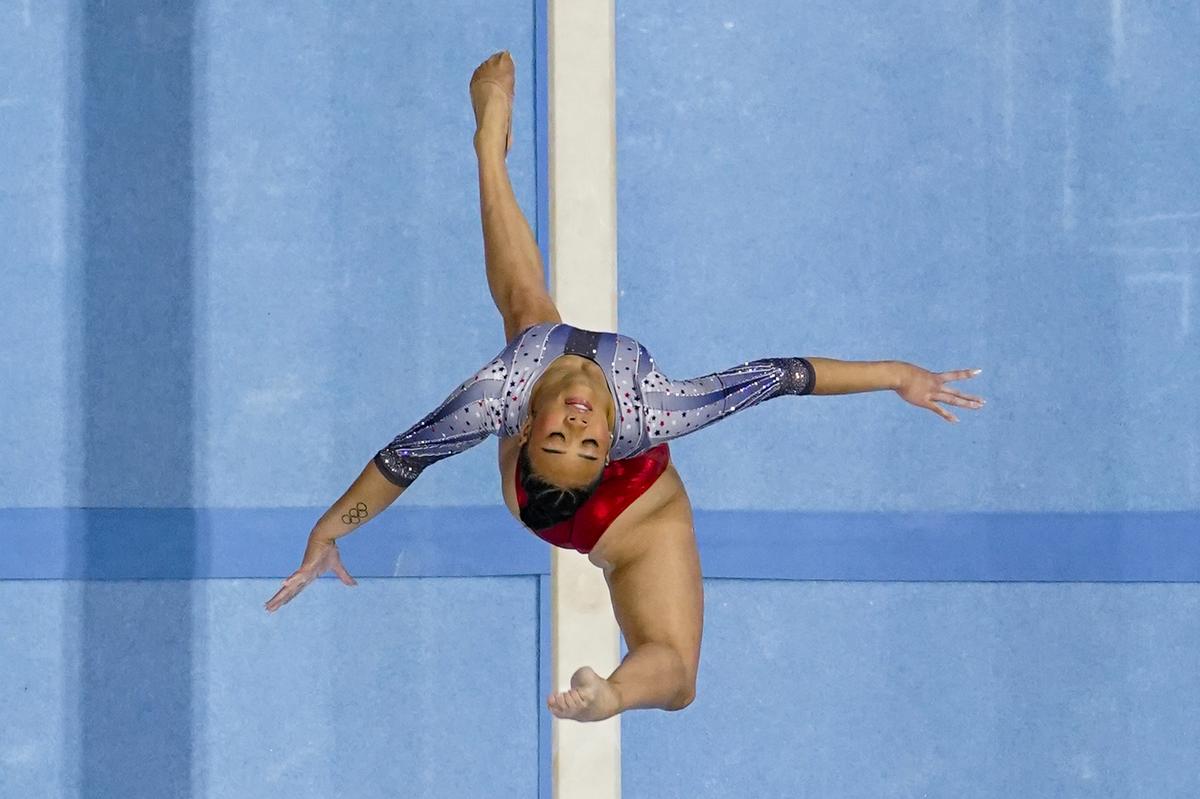
Suni Lee competes on the balance beam.
| Photo Credit:
AP
Suni Lee competes on the balance beam.
| Photo Credit:
AP
Beam: Putting balance and precision to the test, gymnasts perform a series of turns, flips and jumps on a foam-padded balance beam, around four feet from the floor, five metres long, and 10 centimetres wide.
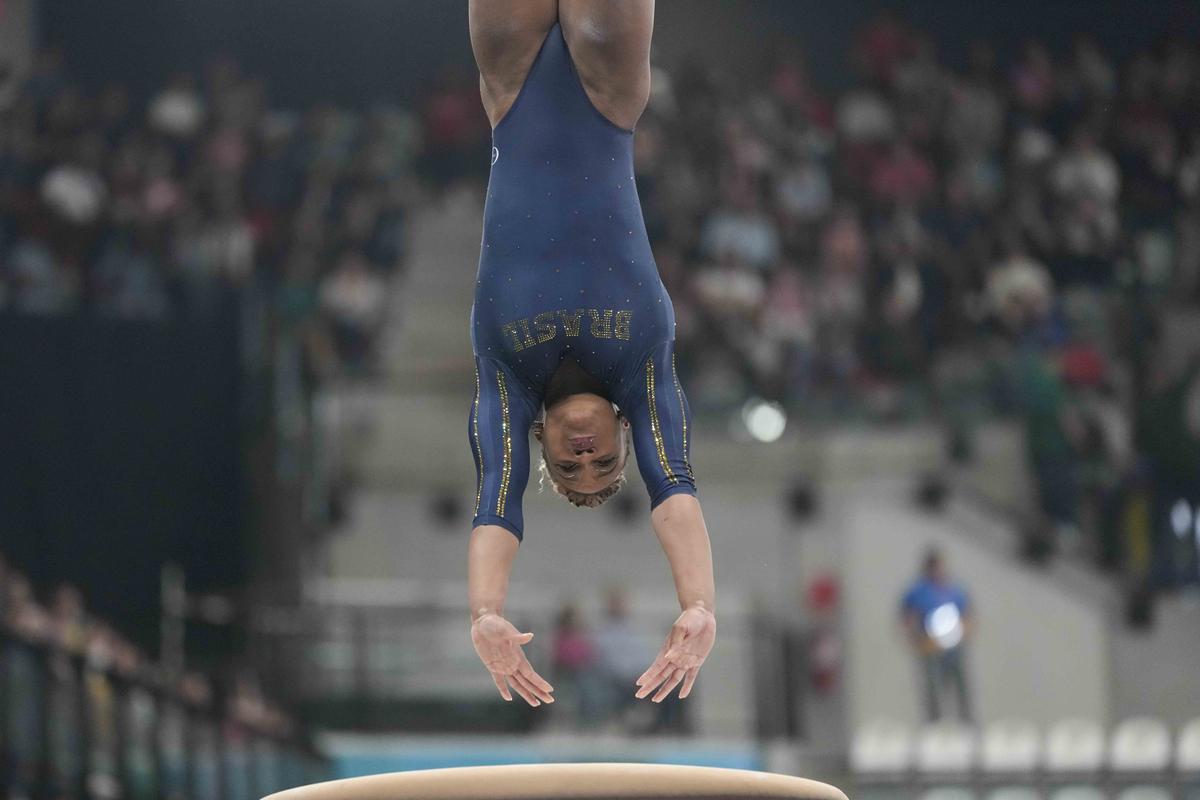
Brazil’s Rebeca Andrade competes on the vault.
| Photo Credit:
AP
Brazil’s Rebeca Andrade competes on the vault.
| Photo Credit:
AP
Vault: Competitors sprint to gather speed before using a springboard to launch themselves into the air. They must use the table with both of their hands and perform a variety of airborne twists and saltos. The most difficult vault is called the Produnova and is rarely attempted – even at the Olympics.
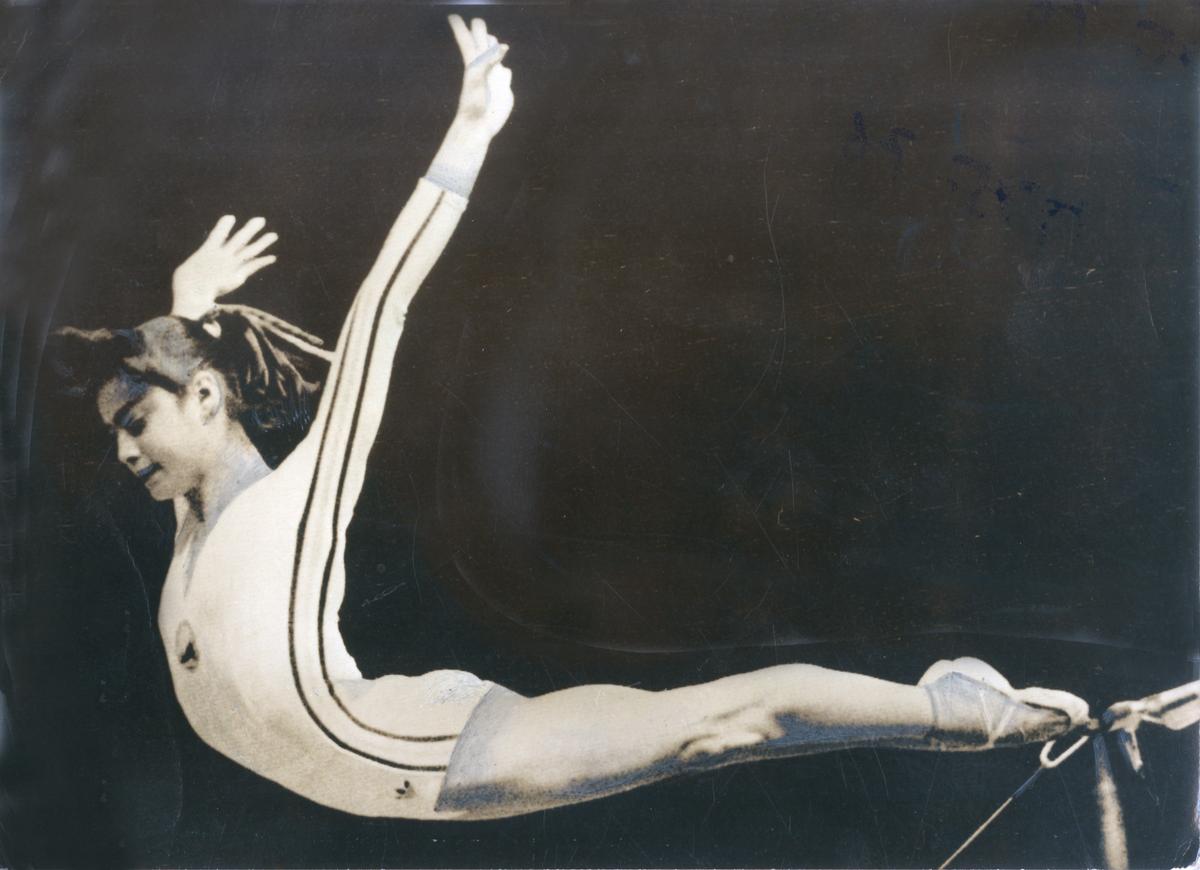
Rumanian girl Nadia Comaneci, 14 years old, swings off uneven bars to earn the perfect score of 10, in the Montreal Olympic Games.
| Photo Credit:
THE HINDU ARCHIVES
Rumanian girl Nadia Comaneci, 14 years old, swings off uneven bars to earn the perfect score of 10, in the Montreal Olympic Games.
| Photo Credit:
THE HINDU ARCHIVES
Uneven bars: In the women’s tournament, the uneven bars are the ultimate test of upper body strength. Competitors need to perform a variety of swings and twists on the low and high bars. They must also transition between the two, soaring six feet through the air, before dismounting and landing with their feet neatly together.

Svetlana Khorkina of Russia leaps in the floor exercise.
| Photo Credit:
Getty Images
Svetlana Khorkina of Russia leaps in the floor exercise.
| Photo Credit:
Getty Images
Floor exercise: Combining dance, gymnastics and drama, each competitor performs a 90-second routine to music. Using the sprung floor to help them gain height, the gymnasts must execute a range of specified moves including tumbles, leaps and pirouettes.
At the Olympics, there are also medals for the team event and the individual all-around. These events are designed to test the gymnasts’ skills on all four pieces of equipment. The rules state that only two gymnasts per country can enter the all-around women’s event.
Men’s artistic gymnastics:
There are a greater number of events on the men’s artistic gymnastics programme – eight in total – across six pieces of equipment:
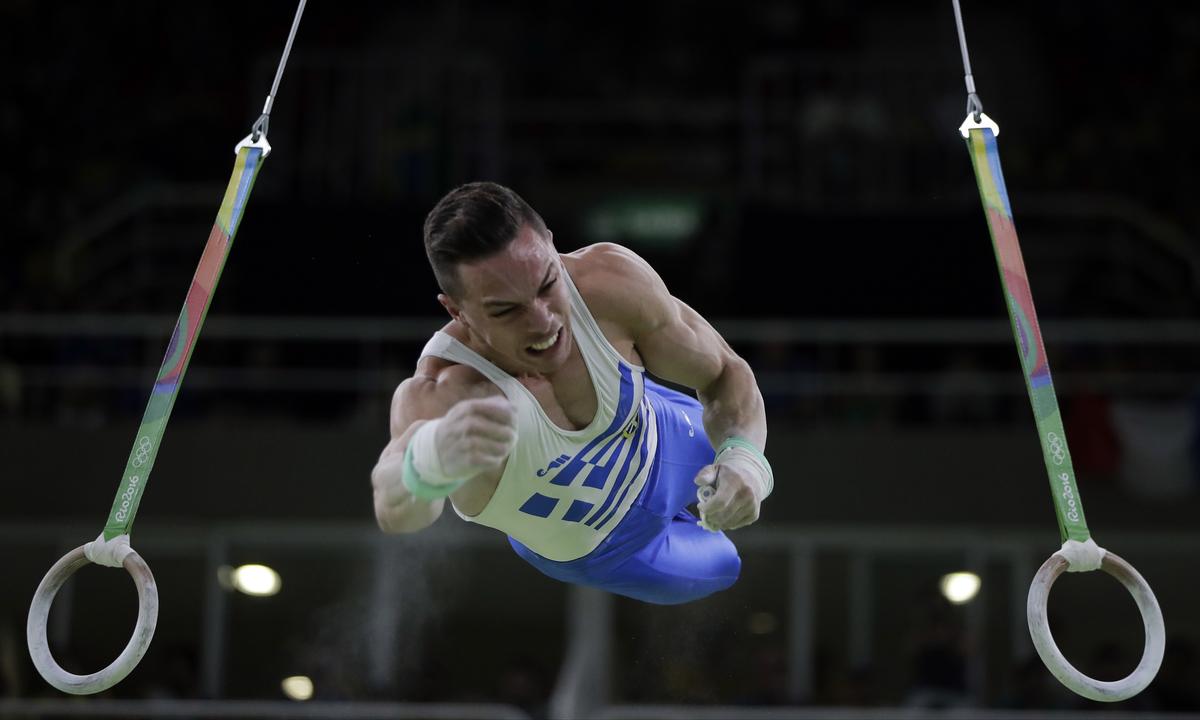
Greece’s Eleftherios Petrounias performs on the rings during the artistic gymnastics men’s apparatus final at the 2016 Summer Olympics.
| Photo Credit:
AP
Greece’s Eleftherios Petrounias performs on the rings during the artistic gymnastics men’s apparatus final at the 2016 Summer Olympics.
| Photo Credit:
AP
Rings: Holding on to two rings, gymnasts lift and hold their body in gravity-defying positions to gain points. The Maltese Cross is considered one of the most difficult moves, where gymnasts hold their body horizontally with their arms outstretched parallel to their body
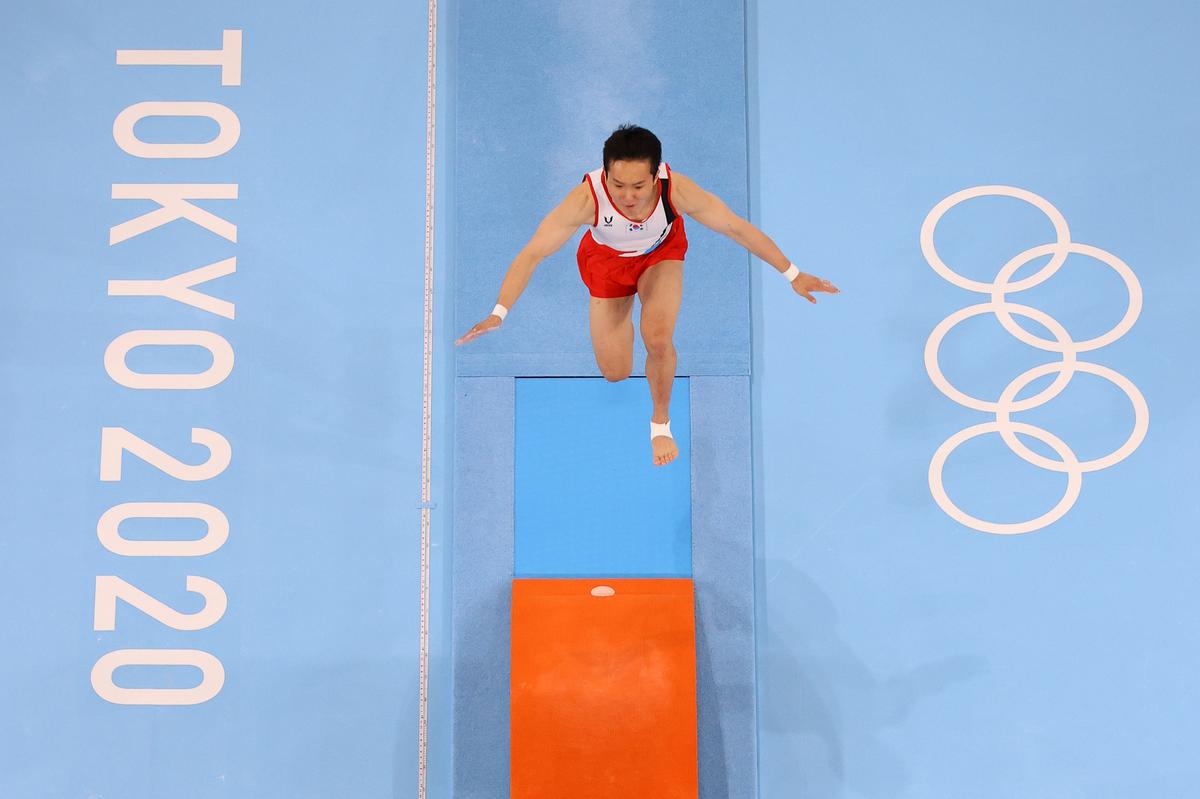
Jeahwan Shin of South Korea competes during the men’s vault final on day ten of the Tokyo 2020 Olympic Games.
| Photo Credit:
Getty Images
Jeahwan Shin of South Korea competes during the men’s vault final on day ten of the Tokyo 2020 Olympic Games.
| Photo Credit:
Getty Images
Vault: This event is similar to the women’s programme.
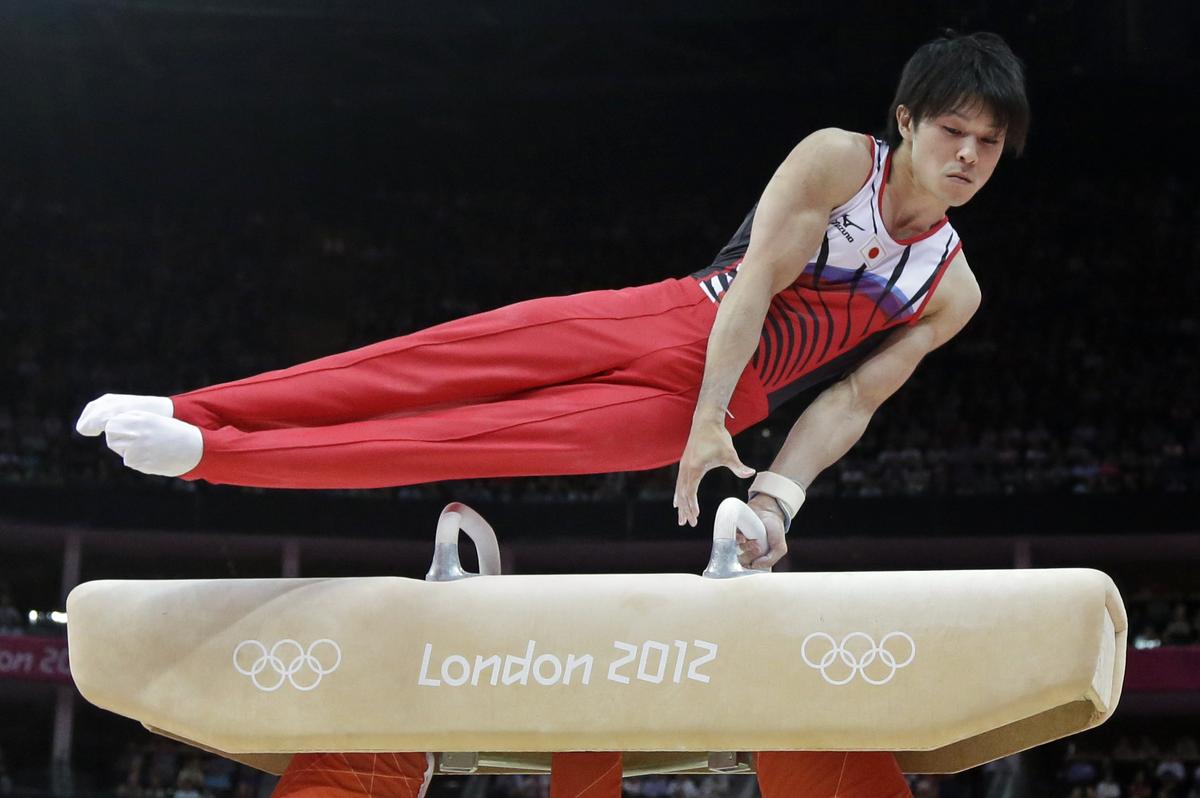
Japanese gymnast Kohei Uchimura performs on the pommel horse during the artistic gymnastics men’s individual all-around competition at the 2012 Summer Olympics.
| Photo Credit:
AP
Japanese gymnast Kohei Uchimura performs on the pommel horse during the artistic gymnastics men’s individual all-around competition at the 2012 Summer Olympics.
| Photo Credit:
AP
Pommel horse: Notoriously difficult to master, gymnasts use their arms and upper body strength to support their weight on the horse as they swing their legs around in fluid, flowing motions.
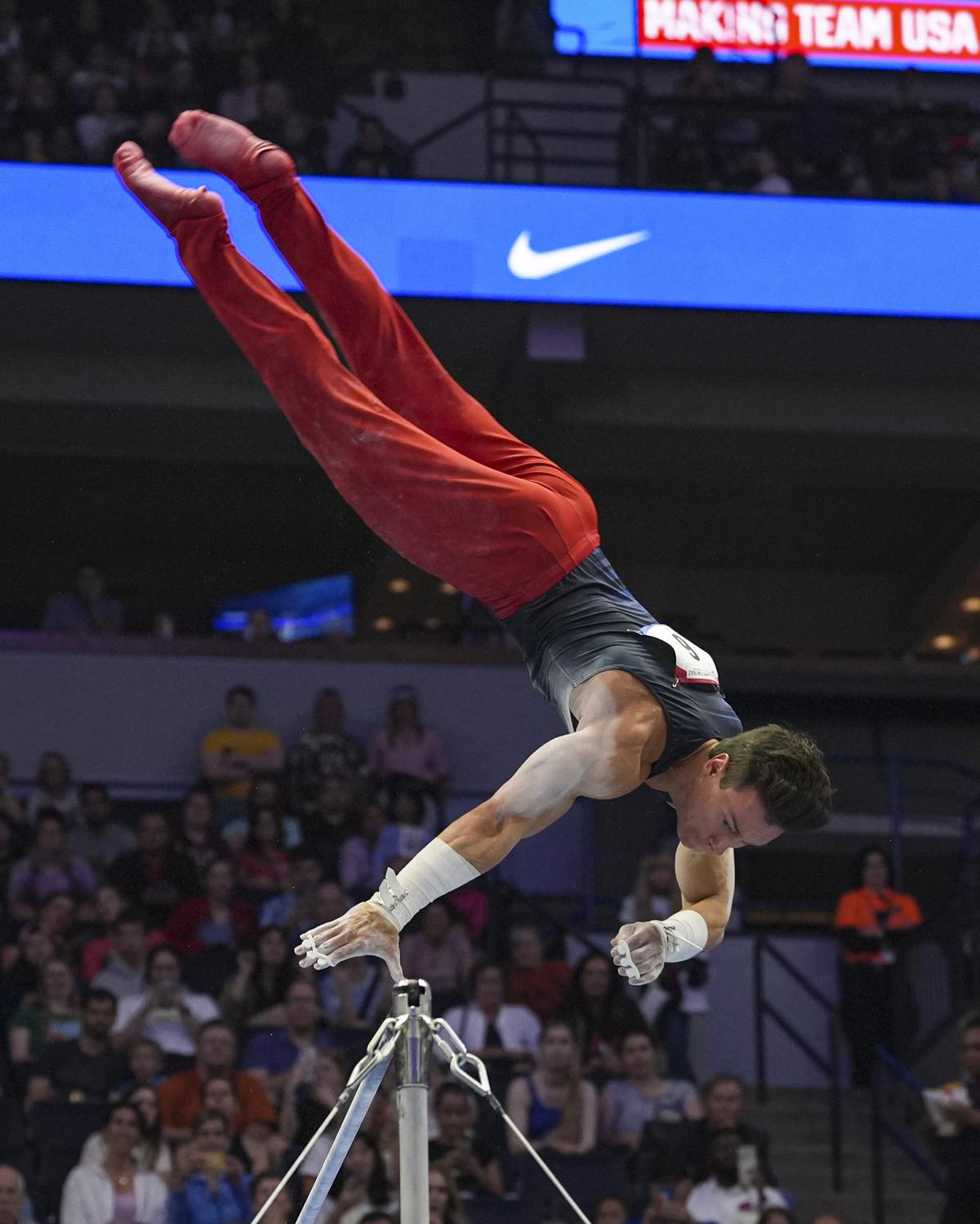
Brody Malone competes on the horizontal bar at the United States Gymnastics Olympic Trials.
| Photo Credit:
AP
Brody Malone competes on the horizontal bar at the United States Gymnastics Olympic Trials.
| Photo Credit:
AP
Horizontal bar: Gymnasts must perform swings, turns and a complex dismount on one bar, approximately nine feet in the air.
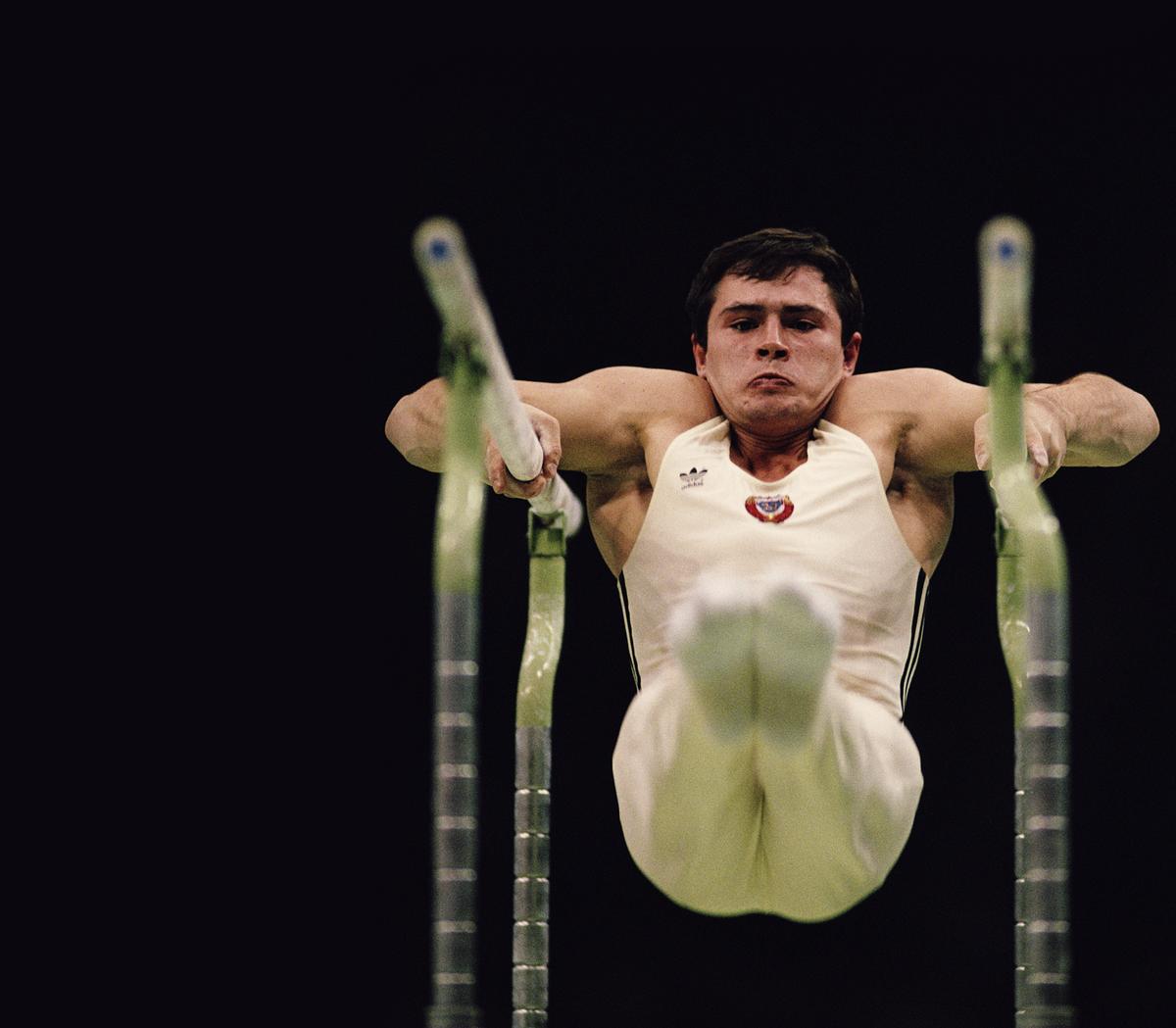
Dmitry Bilozerchev of the Soviet Union during the Men’s Parallel Bars on 24th September 1988 during the XXIV Summer Olympic Games.
| Photo Credit:
Getty Images
Dmitry Bilozerchev of the Soviet Union during the Men’s Parallel Bars on 24th September 1988 during the XXIV Summer Olympic Games.
| Photo Credit:
Getty Images
Parallel bars: Using their upper body strength, gymnasts need to execute a series of swings and flight moves on two parallel bars. The most challenging maneuvers are when the gymnast loses sight of the poles for a split-second.
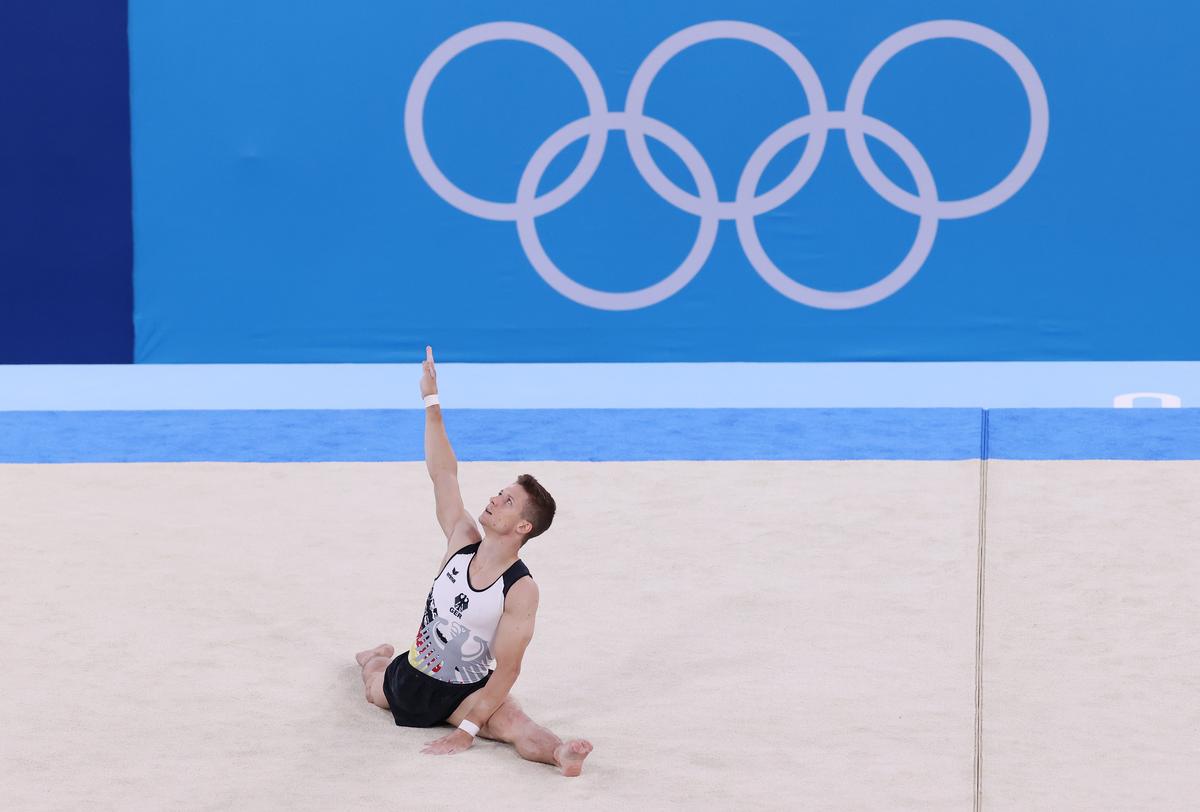
Philipp Herder of Germany competes in the floor exercise during the Men’s All-Around Final on day five of the Tokyo 2020 Olympic Games.
| Photo Credit:
Getty Images
Philipp Herder of Germany competes in the floor exercise during the Men’s All-Around Final on day five of the Tokyo 2020 Olympic Games.
| Photo Credit:
Getty Images
Floor exercise: In the men’s floor exercise event, there is greater emphasis on acrobatics than in the women’s event.
Two additional events test the overall skill of the male gymnasts, with Olympic medals in the team competition and individual all-around men as well. As with the women, only two male gymnasts from each competing country can enter the all-around event.
How is Artistic gymnastics scored?
Gymnasts are awarded a D score for difficulty and an E score for execution. The difficulty score is based on the performed moves, earning between 0.1 and 1.0 points per move.
For the final D score, the top eight moves are counted for women, and top 10 for men. For the vault, it’s simply the score associated with the vault move.
For their E score, every gymnast starts with a perfect 10.0 score, with points deducted for any mistakes.
The gymnast with the highest combined D and E score wins. The gymnast with the highest combined score from all events wins the all-around event.
What is Rhythmic gymnastics?
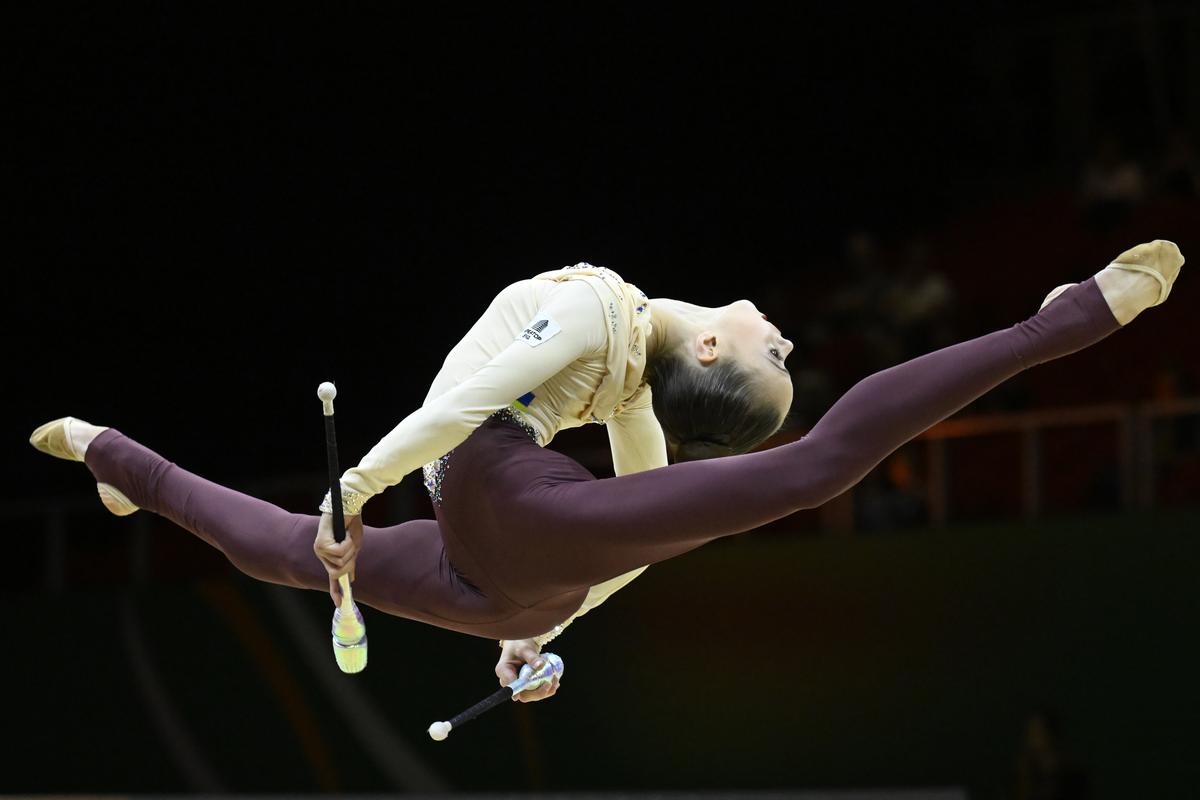
Rhythmic gymnastics is a female-only event that uses apparatus to showcase skill, flexibility and musicality, and made its Olympic debut at the 1984 Los Angeles Games.
| Photo Credit:
AP
Rhythmic gymnastics is a female-only event that uses apparatus to showcase skill, flexibility and musicality, and made its Olympic debut at the 1984 Los Angeles Games.
| Photo Credit:
AP
Rhythmic gymnastics is a female-only event that uses apparatus to showcase skill, flexibility and musicality, and made its Olympic debut at the 1984 Los Angeles Games. There are just two categories: individual all-around women and group all-around women
How is Olympic rhythmic gymnastics scored?
Performances in rhythmic gymnastics are given by judges, who assess the performance and award a difficulty (D) score and an execution (E) score, which are combined to give the final score for the routine. The Code of Points is renewed after each Olympics.
The D score is based on each element of the performance including leaps, jumps and use of apparatus. This difficulty score is unlimited. The E score is based on how well the routine was executed either by the individual or the group. This has a starting value of 10 points. The final number is an average of the middle three scores awarded by the judges.
The D and E scores are combined at this stage, giving a final score. Then, any deductions for penalties are taken away. The list of instant deductions is incredibly long and complex in rhythmic gymnastics. Competitors can be penalized for anything from breaking the apparatus, to the time taken, to landing heavily on their feet.


